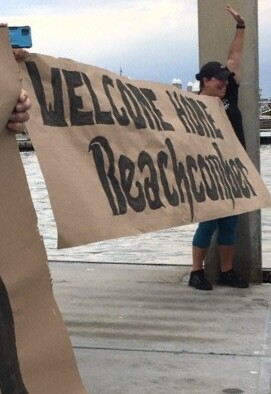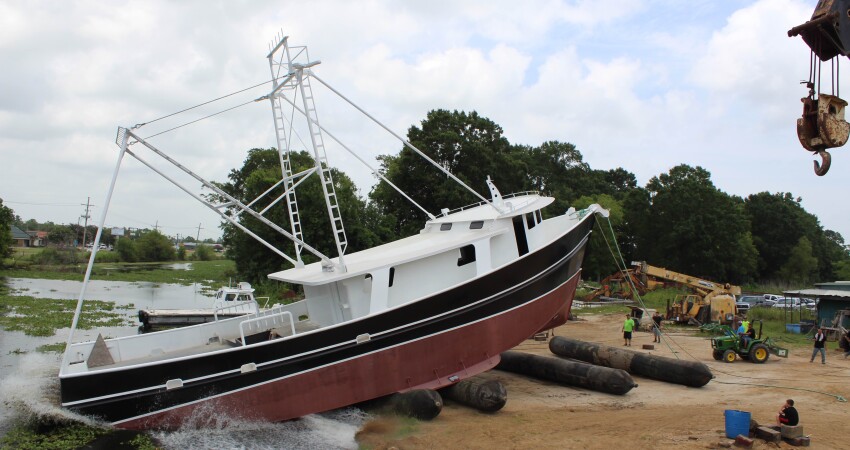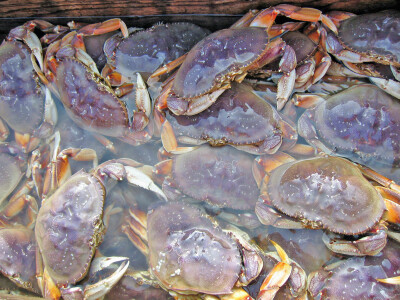Florida shrimper builds the boat he's always wanted, and it’s paid for when it leaves the yard. Ronald Yow has been shrimping out of Mayport, Fla., for 28 years, and he finally has the tool he wants for the job. In April 2023, he brought home the Beachcomber, a 68-foot freezer vessel built for him at Portier Fabrication in Chauvin, Louisiana. National Fisherman readers may remember the Beachcomber being launched in 2019, although it would be four more years before it actually left the yard.
“I started out shrimping with my father for four or five years,” said Yow. “Then I had a boat, the Sea King. I fished that for 20 years. Then I had this one built. It took time because I did it pay-as-you-go so that I wouldn’t have a loan.”
It was a wise move, as low prices and scarce product are making things tough for U.S. shrimp fishermen.
“We’re tied up right now, sad to say. What we catch won’t pay for the fuel.” Yow pointed out that Mayport, just east of Jacksonville, is one of the oldest ports in the United States. “When I was a kid, fifty or sixty boats were here,” he said. “Now there’s seven of us.” Despite the difficult price situation, Yow looks forward to the coming year’s fishing, and based on years of experience, he and Portier Fabrication have built the right boat for the job.
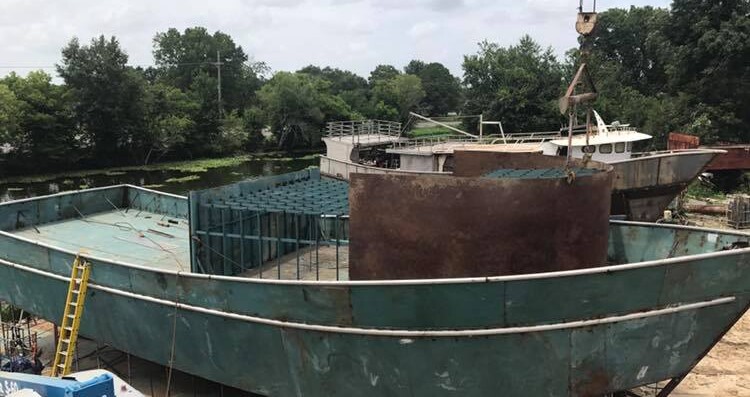
“We put in the running gear and launched the boat in 2019,” said Robbie Portier, who owns the company with his wife Ashely. “Then he’d fish his other boat and send us money, and we’d work on it some more. We did most of it. He hired people to do the electronics and refrigeration, and we worked with them. But we did all the finishing.”
Portier calls the boat 65 feet. “That’s the deck,” he said. “The beam is 23 feet, and the boat draws 7 feet. It’s probably 68 overall.”
The running gear, or power train, consists of an S6R2 640-hp Mitsubishi main, with a Twin Disc MG5222 reduction gear at 5:1. “He’s got a 4-inch shaft, Aquamet 17,” said Portier. “The wheel is 50x40. He’s happy with it. He can tow right alongside bigger boats, and the Mitsubishi is more efficient on fuel. He runs his hydraulics off the front end.”
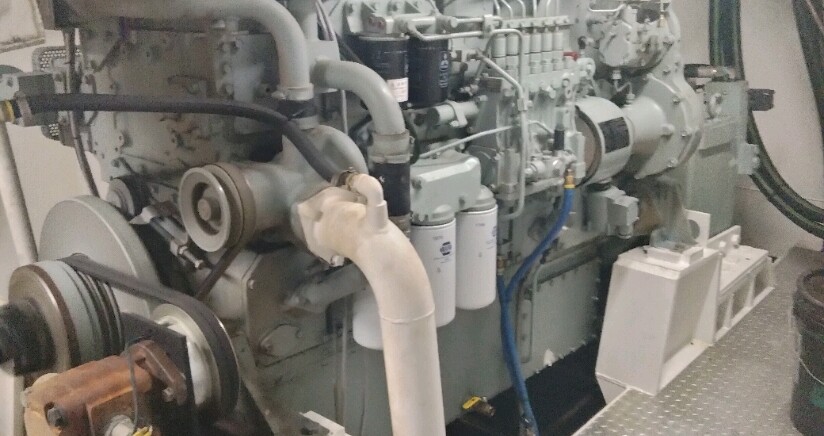
Portier noted that his company has its own machine shop and just built a dry dock. “We do all our own couplings and stuffing boxes,” he said. “We make all the doors and hatches. Sometimes, we get things done at Dale’s Welding in Venice (La.), but that’s a long drive. It’s only 30 miles as the crow flies, but to drive there, you must go up to New Orleans and then drive all the way down that side” of the state.
Besides the Mitsubishi, Yow has two John Deere 65kW generators that run his refrigeration, electronics, hotel accommodations, and other systems. “I have a chill tank on deck and a blast freezer in the hold,” said Yow. “Chuck Landry down in Houma, Louisiana, put that together for me. He has CCL Enterprises. He’s an interesting guy. He builds freezer units for boats up in Alaska, ships them up there in pieces, and then he goes up in the summer and installs them on boats.”
Chuck Landry put a pretty standard system on the Beachcomber. “We put a chill tank and a brine tank on deck,” said Landry. “And a blast freezer in the hold. I put 316L stainless steel tubing around that and ran refrigerant through it - that’s a 2-ton system. They stack the shrimp in there, but the time it takes depends on the temperature of the shrimp. Then they put it in the brine tank, about 300 pounds at a time. They can freeze about 1500 pounds an hour.”
Landry’s 5-ton brine tank holds a heavy brine mix – 23 percent – at 0 to 2 degrees Fahrenheit. “From there, it goes to the hold,” said Landry. “The blast freezer mostly keeps them frozen, but if the shrimp are not completely frozen, it will freeze them.”
Yow puts his shrimp in bags like onion sacks, which hold about 68 pounds. “We put about 600 to 700 pounds in the brine tanks, and they freeze in about 20 minutes,” he said. “Then we pick them up with the crane and let the water drain in the tank, then we put them in the hold and let them drain some more, and then we stack them. That’s mostly how it’s done from the Carolinas to Texas. Only a few guys box and flash freeze their shrimp, and I will be one of them. It’s a better-quality product.”
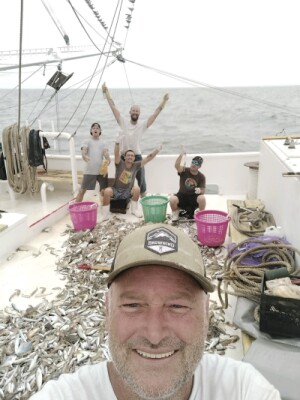
According to Portier, the below deck configuration of the Beachcomber consists of a water tank, a cargo room, the engine room, the fish hold, and the lazarette.
“The fish hold holds 45,000 pounds,” Yow said. “But I haven’t filled it yet.”
On deck, Yow has two Pullmaster 25 trawl winches and a smaller try net winch. “I’m not sure what the number on that one is,” he said. “But when we’re in shrimp, I haul that try net every five or ten minutes.” Yow fishes four Mongoose 55 nets, two on each side, and a 12-foot try net. “Right now, we’re towing about three hours at two and a half knots,” he said.
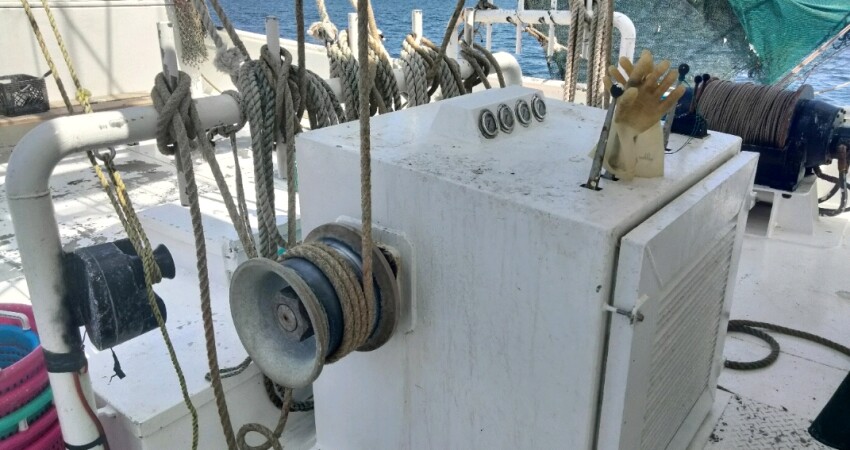
In addition to his deck winches, Yow has an anchor winch, something his last boat was missing. “Don’t I love that anchor winch,” he said. “No more grabbing the line and running it back to a winch.”
In the cabin, Yow has the galley and all the staterooms on deck level. “I usually take two guys,” he said. “In the summer, when we’re getting more volume, and you have to get them chilled quicker, I take three.”
Portier Fabrication designs all the carpentry and galley for its customers. “We offer a set of choices for how they want things set up,” shared Robbie Portier. “Then we work with them. Some guys like the bedrooms down in the bow. But on Ronald’s, all the bedrooms are on the deck level.” Portier runs an average crew of about six men. “We usually build one boat at a time. So that’s enough. If we get more contracts, we hire more.”
Portier’s father started the yard in the late 1970s. “The Vietnamese were coming around then and getting money to build boats. He built a lot of boats for them.”
Robbie Portier and his wife Ashley continue the craft at their shop. The Beachcomber's wheelhouse has a classic look, with a traditional wooden spoke-handled wheel and plenty of woodwork on the console and around the window. Rhodes Electronics in Houma supplied and installed the electronics package, which consisted mostly of Simrad equipment. “It’s a pretty basic system,” said Dustin Rhodes. It includes radar, sounder, plotter, a couple of VHFs, satellite compass, and autopilot.”
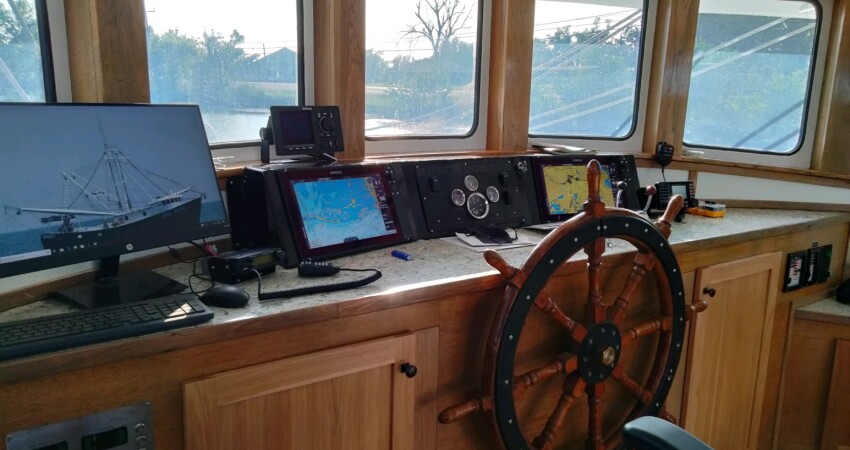
The Simrad equipment Rhodes installed included two NSS16 multi-function displays; a HALO20 radar with a 20-inch dome and 24-nautical mile range; an HS75 GPS compass; an AP70 Mk2 autopilot; and a V3100 Class B AIS (Automatic Identification System.) Rhodes also provided Yow with a Standard Horizon GX6000 Quantum VHF and an Icom FM IC-2300H transceiver. “I believe he uses the FM to tune to a channel so he can talk to just a few other boats,” said Rhodes.
Yow has been fishing his new boat for almost a year now. He noted that the white shrimp that make up the bulk of his catch are coming slow in late winter.
“We had a couple of storms this winter that caused 18- to 20-foot seas, and I believe that scattered the shrimp, who went to deeper water. When things calm down, they’ll bunch up again. By April, the water will warm up to around 70 degrees, and they’ll come in.”
